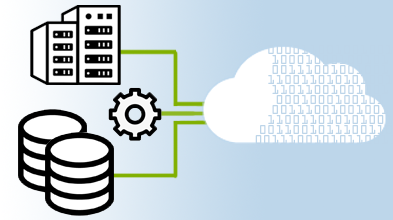
Application modernization is the practice of updating older software for newer computing approaches, including newer languages, operating systems, form factors and infrastructure platforms.
A great analogy for application modernization is having an older home and choosing whether to:
- Upgrade the key mechanical components like plumbing, electrical, foundation, etc to reduce the chances of having major problems but keep the rest the same. (Lift and Shift)
- In addition to the mechanical upgrades, painting walls and ceilings, new carpet or refinished floors and other cosmetic and comfort upgrades. (Replatforming)
- Gut the entire house and build back new. While the basic layout of the home will be the same, everything in it will be new. (Refactoring)
- Tear it down hire an architect and build new. (Rip and replace)
- By a piece of land and create a brand new house. (New Build)
At DCT we assist with five types of application modernization:
Lift and shift:
This is usually as simple as moving an application from internal servers/data center to a cloud platform (AWS, Azure, etc). With “Lift and Shift” you are essentially moving the application “as is,” with little to no changes other than updating operating system and database versions and perhaps the programming language and internal controls used.

Benefits:
- Better performance due to optimized hardware.
- More easily supported based on latest technology.
- Simple remote management of backups, fault tolerance etc.
- Reduced risks of virus, hacking, data theft.
Replatform:
Replatforming also relies on maintaining legacy systems but adds the ability to improve the user experience of the application. It does not require major changes in code or architecture but uses standard tools to leverage the existing business logic of legacy systems create new user experiences based on modern technologies. Replatforming is often done alongside Lift and Shift.Benefits:
- Extends the lifespan of legacy systems.
- Lower cost than other approaches
- Less Risk than other approaches
- Leverages new technologies that are familiar to the users.
- Allows some improvement in work flow and efficiency.
- Lower training and support costs.
Refactor:
Refactoring is essentially another way of saying “rewriting”. In this approach often consists of rewriting code with limited changes to functionality or work flow. with . A company may choose this approach to retire end of life hardware or software, if it wants to break up a monolithic application into smaller, decoupled pieces—an architectural choice commonly called microservices, choose a different data base or re-architect an application with an API first approach to enable easier integration with other systems.
Benefits:
- Leverage capabilities of new technology
- Future Proof Applications
- Improve User Experience
- Increase performance
- Decrease support costs
- Better interoperability with other systems.
Rip and replace:
As the name implies, this option eliminates the original application completely and replaces it with a new application better suited to an organization’s business needs. Rip and replace allows a company to completely transform their processes, offer new products and/or services and develop new competitive advantages.
Rip and replace carries the highest potential reward as well as the highest risk. If business considerations are driving the effort, rip and replace usually makes sense, as opposed to if technological constraints are driving the decision.
Benefits:
- Increased Functionality of application
- Better adoptions with ease of use.
- Leverage new technologies like voice, wearable, RFID.
- Offer new products (data as a product)
- Increase engagement with customers
- Differentiate from competitors
New Build:
New build is pretty self-explanatory. DCT primarily assists customers with New Builds when automating a business process that has never had software solution. Most new build applications deal with specific, proprietary business processes. These applications provide a great opportunity to collect data that has never been available to the company to improve products and services or to provide additional value to the customer.
Some Examples of recent New Builds:
- A custom pick/pack/deliver system for an ecommerce company in the prepared meals industry.
- Custom forms creation and audit scheduling and reporting for an agribusiness company.
- Hazardous Material tracking/reporting for a global chemical company.
- Tank tracking and certification for a national oil field service company.
- Consignment Inventory/Vendor Managed Inventory for an industrial products distributor
